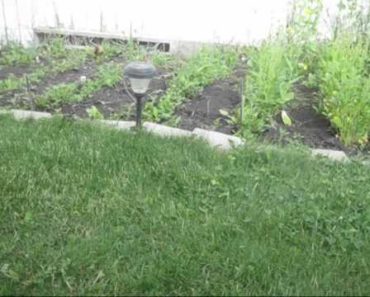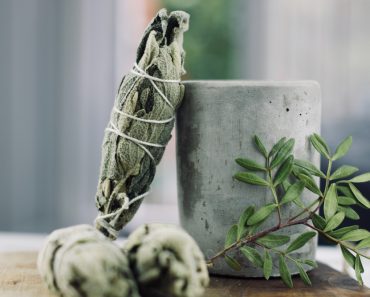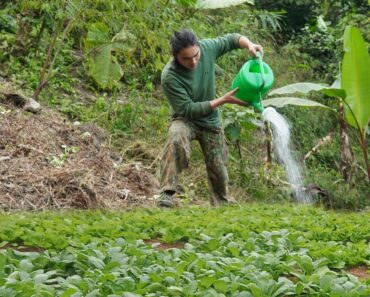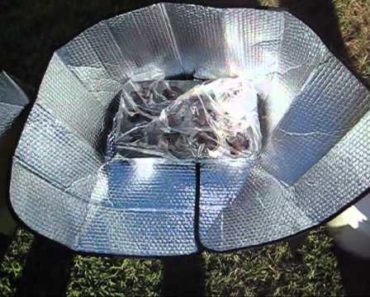Mead is an interesting beverage, and it’s getting a lot of popularity in the craft beverage market.
If you asked me what mead is, I would say it’s a beverage that can be described as a combination between beer, wine, and cider. However, it has its own identity, and the similarities with the listed beverages depend primarily on how mead it’s made.
Mead is an alcoholic beverage with a distinctive feature. Its honey base helped it be accepted as its own entity throughout time. Many historians agree that mead is the world’s oldest alcoholic drink, with recordings dating back to 4,000 years.
Mead basics
Every brewer knows that the alcohol equation is simple, and you need sugar, water, yeast, and time to craft your alcoholic beverage. However, when making mead, there are certain subtleties that one needs to keep an eye on even though the equation remains the same: blend the sugar source with water, add yeast and give it enough time for fermentation to take place.
While beer gets its sugar from malted grains, cider from apples, wine from grapes, or other fruits, mead gets its sugar from honey.
In today’s world, every commercial alcohol producer must follow established rules regarding the fermentable sugar source and flavoring ingredients they use. These strict rules are imposed to obtain identical (or similar if you will) products and name them accordingly.
When it comes to flavoring mead, you can use a wide range of ingredients as a homebrewer. However, these ingredients will impact the finished product, giving it a different name, depending on the ingredients you’ve used. It may not seem like much, but if you want to participate in homebrewing competitions or if you want to sell your mead, you must follow the rules.
While there are many types of mead and the list keeps growing, the main contenders you should know about are:
- Traditional mead (also called show mead) is made with honey, water, yeast, and minimal flavor-balancing ingredients.
- Melomel is any mead made with honey and fruits (usually, a single kind of fruit is used, but blends of various fruits can also be used).
- Metheglin is a type of made that involves honey and herbs or spices.
- Cyser is mead made with honey and apple juice or cider.
Like wine and beer, the alcohol levels of mead can vary, and it can be anywhere from 4 to 18 percent. Mead can be made very dry or sweet, and you can adjust the alcohol content and sweetness levels by balancing the amount of honey you use and the type of yeast used for fermentation.
Balancing the honey with a yeast quantity with a specific alcohol tolerance will ferment sugars in the honey that may leave residual sweetness or be fermented completely to dryness. To stop the mead from fermenting, many brewers use potassium sorbate.
Potassium sorbate is potassium salt and is the alternative to the natural sorbic acid that occurs naturally in some fruits as polyunsaturated fat. It is the synthetically produced version of the chemicals occurring naturally in nature. If you decide to use potassium sorbate, make sure the USFDA approves the products you’re buying.
Ingredients required for making mead
1. Honey
This is the core of the beverage, and you need to use raw or unfiltered honey. Brewers also use honey labeled as “natural” or “local,” but you need to know that such labels are not regulated, and even if you ask the retailer how the honey was sourced, chances are you won’t get unfiltered honey. While the best way to get raw honey would be to make it yourself by becoming a novice beekeeper, you can also get in touch with local beekeepers to buy raw honey.
Light wildflower honey is recommended to be used for making mead, but you can also use honey from sourwood, poplar, or basswood trees. If you want to use dark honey, keep in mind that your mead will have a potent flavor, and it may not be to everyone’s liking. When using dark honey, it’s recommended to mix it with lighter honey to obtain a milder flavor.
The honey to water ratio plays an essential role in the level of sweetness, even though the yeast used influences the amount of sugars fermented. The general rule to be followed is to use 2 ½ pounds of honey to 1 gallon of water if you want to obtain a mead between dry and semisweet.
If you use 3 pounds of honey to 1 gallon of water, you will get a mead somewhere between semisweet to sweet. However, if you want a sweet mead (desert-style), you can use 4 pounds of honey to 1 gallon of water.
The trick with using large quantities of honey is to avoid adding it all at once because it will underferment the mead or give off-flavors. You can add half the amount you plan on using, and after 2-3 weeks into the fermentation process, you can add the rest.
2. Yeast
Any type of yeast can be used to ferment the sugars in honey, but each strain has a different alcohol tolerance, temperature preference, and a distinct flavor profile. Most experience mead brewers use wine or champagne yeast, while the rest use commercially-sold mead yeasts or brewer’s yeast.
For higher alcohol content, wine and champagne yeasts are recommended, while for lower-alcohol mead, you can use any other type of yeast, including bread yeast.
3. Water
Water is an essential component used to dilute the honey and fermentable. You can use tap water if it’s filtered or dechlorinated. You can boil the water for 20-30 minutes or leave it outside in an open container for 24 hours to get rid of chlorine. However, many experienced brewers recommend using spring water for mead with a well-rounded flavor.
4. Flavoring and other components
As I’ve stated before, many ingredients can be used for making mead. So here are the most common ingredients you should know about and the basic techniques you should learn.
To make melomel, you will need to add ¼ of the total amount of fruit you plan to use during the primary fermentation stage. The remaining ¾ quantity can be added 3-4 weeks into the fermentation process. You will get only a subtle fruit flavor if you add all the fruit quantity at once.
Make sure the fruit is fresh and whole, and it wasn’t over-processed. Remove the stems and leaves and chop the larger fruits into chunks.
For making cyser, you will need to use apple juice instead of water for the fermentation. To obtain the desired flavor, you will need to taste different apple juices and blend various juices until you get that preferred flavor.
For making metheglin, you can use pretty much any herb or spice you can think of. The rule of thumb here is to use twice as many fresh herbs and spices compared to dried quantities. Some brewers prefer to add them whole to the mead, while others will make a tea and then mix it with the mead. The problem with using herbs and spices is that you can easily overdo it, and you need to follow the recipes closely or start with a small amount if you decide to make your recipe.
Brewers add fermentation enhancements to the must (unfermented mead) such as tannins, acids, and nutrients. These ingredients are added in small amounts, and they help obtain a well-rounded flavor. They can be purchased in powder form at pretty much any homebrew store.
There are also natural alternatives such as oak, walnut, grape leaves for tannins, or a squeeze of citrus fruit to obtain acidity. For nutrients that provide nutrition to the yeast, these can be obtained from unfiltered honey with a good amount of hive residue, or you can use bee pollen. If you are making mead with fruits or other botanicals, you might not need to add nutrients, but if you want to be on the safe side, you can always purchase and use a wine nutrient.
Making mead step by step
Here is a basic semisweet traditional mead recipe that you can try, and it’s pretty straightforward. If you are new to brewing, I recommend starting with 1-gallon batches. You will need the following:
Equipment:
- One 3-gallon cooking pot
- Two 1-gallon glass jugs
- One 2- to 3- foot siphon tube
- One 1- to 2- gallon container with a spigot, which will be used for bottling
- A large funnel
- Bottles with corks or caps
- Bottle corker or capper
- A stirring spoon
Ingredients:
- 2 to 4 pounds raw wildflower honey
- 1 gallon dechlorinated tap water (spring water is recommended)
- 1 teaspoon bee pollen or 1 teaspoon yeast nutrient
- ½ teaspoon lemon juice
- 1 packet yeast
- Flavorings of your choice such as fruits, herbs, or spices
Directions:
- Gather all the equipment and clean it with hot water and a natural cleanser.
- Pout 2/3 of a gallon in the cooking pot and bring the water to a boil. Turn off the heat and let the water sit for 10-15 minutes.
- Add the honey and stir until it’s fully dissolved to obtain the must, then add the nutrients of your choice, lemon juice, and flavorings (if you decide to use any). Mix well.
- Let the mixture cool to room temperature for 30 minutes, then use the funnel to pour it into a glass jug. Make sure you leave 5 inches of headspace and swirl the jug to help aerate the must.
- Add the yeast to the jug by sprinkling it on the must, then put the airlock on the jug.
- Place the jug in a warm, dark place (70 degrees) and let it sit for two weeks.
- After two weeks, add more water to 2 inches below the jug’s opening.
- After two more weeks, transfer to another jug using the siphoning tube. Make sure the tube is positioned just above the yeast sediment. Store for 4 to 6 months at 60 to 70 degrees.
- Transfer the mead into the container with a spigot for bottling.
- If you are using beer bottles with a capper or swing-top bottles, fill them about ½ inch below the opening. If you decide to use bottles with a corker, you should fill the bottles ½ to ¾ inch below the cork’s bottom.
- Store the bottles in a cellar or basement and let the mead age 4-6 months. When opening the first bottle and your mead tastes a bit rough, let the other bottles sit for a few more months.
Concluding
Making mead is not complicated, and it can be done even by those who are just discovering the art of brewing. This versatile honey-based beverage can be easily made at home if you follow the steps listed in this article and ensure good hygiene is maintained throughout the entire process.
Mead is a hearty addition to any home brewing arsenal, and I recommend you give it a try. You won’t be disappointed!




























